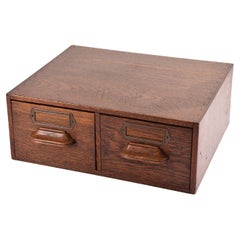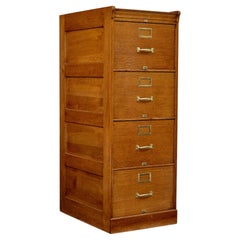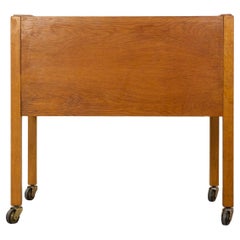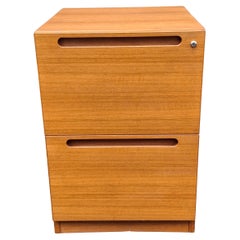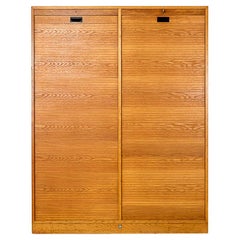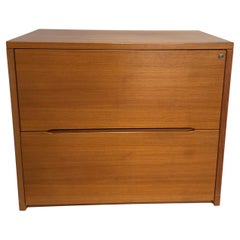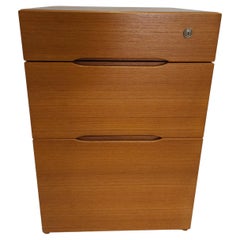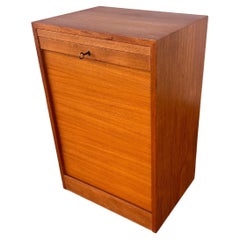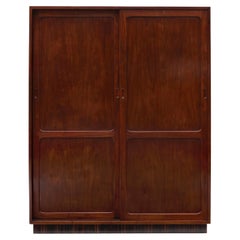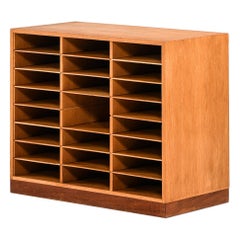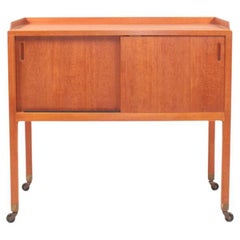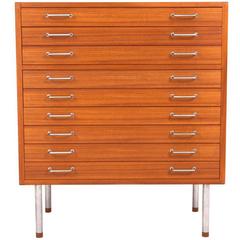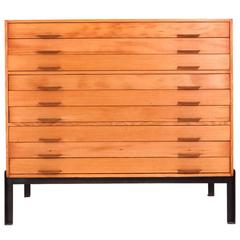Scandinavian File Cabinet
Early 20th Century Scandinavian Arts and Crafts Decorative Boxes
Metal
Mid-20th Century Swedish Edwardian Cabinets
Oak
Vintage 1960s Danish Scandinavian Modern Cabinets
Oak
20th Century Danish Scandinavian Modern Cabinets
Rosewood
Mid-20th Century Danish Scandinavian Modern Cabinets
Teak
Vintage 1960s Danish Scandinavian Modern Cabinets
Oak
Mid-20th Century Danish Scandinavian Modern Cabinets
Teak
Mid-20th Century Danish Scandinavian Modern Cabinets
Teak
20th Century Danish Scandinavian Modern Cabinets
Teak
Mid-20th Century Danish Scandinavian Modern Cabinets
Mahogany
Vintage 1960s Danish Scandinavian Modern Cabinets
Oak, Teak
Vintage 1960s Danish Scandinavian Modern Commodes and Chests of Drawers
Brass
Vintage 1960s Danish Mid-Century Modern Cabinets
Teak
Vintage 1960s Swedish Scandinavian Modern Commodes and Chests of Drawers
Oak
Vintage 1970s Danish Scandinavian Modern Cabinets
Teak
Vintage 1960s Danish Scandinavian Modern Desks
Brass
20th Century Danish Scandinavian Modern Cabinets
Teak, Paper
Vintage 1960s Danish Scandinavian Modern Cabinets
Rosewood
Recent Sales
Vintage 1960s Danish Scandinavian Modern Cabinets
Steel
Antique Mid-19th Century Danish Scandinavian Modern Cabinets
Steel
Vintage 1950s Scandinavian Scandinavian Modern Cabinets
Oak
Mid-20th Century Swedish Scandinavian Modern Cabinets
Birch
Mid-20th Century Swedish Scandinavian Modern Cabinets
Birch
Mid-20th Century Swedish Edwardian Cabinets
Brass
Late 20th Century Danish Scandinavian Modern Cabinets
Teak
Vintage 1960s Danish Scandinavian Modern Cabinets
Teak
Mid-20th Century Scandinavian Modern Bookcases
Birch, Oak
20th Century Swedish Scandinavian Modern Cabinets
Birch
Vintage 1970s Danish Scandinavian Modern Cabinets
Rosewood
Mid-20th Century Danish Scandinavian Modern Cabinets
Rosewood
Vintage 1950s Danish Scandinavian Modern Cabinets
Brass
Vintage 1970s Scandinavian Modern Cabinets
Teak
20th Century Danish Scandinavian Modern Cabinets
Vintage 1960s Danish Scandinavian Modern Dressers
Oak, Rosewood
20th Century Canadian Scandinavian Modern Credenzas
Chrome
Vintage 1950s Danish Scandinavian Modern Cabinets
Beech, Teak
Vintage 1960s Danish Scandinavian Modern Commodes and Chests of Drawers
Chrome
Vintage 1960s Danish Mid-Century Modern Cabinets
Teak
Vintage 1980s Danish Scandinavian Modern Cabinets
Teak
Vintage 1940s Danish Scandinavian Modern Shelves
Pine
Vintage 1960s Danish Scandinavian Modern Desks
Beech, Teak
Vintage 1970s Danish Scandinavian Modern Desks and Writing Tables
Teak
Vintage 1950s Danish Scandinavian Modern Cabinets
Brass
Late 20th Century Danish Scandinavian Modern Credenzas
Teak
Vintage 1960s Danish Scandinavian Modern Cabinets
Teak
Vintage 1960s Danish Scandinavian Modern Desks
Teak
Vintage 1960s Danish Scandinavian Modern Cabinets
Teak
Vintage 1970s Danish Scandinavian Modern Credenzas
Teak
Mid-20th Century Danish Scandinavian Modern Cabinets
Beech, Teak
Vintage 1960s Danish Scandinavian Modern Cabinets
Birch, Teak
Late 20th Century Danish Scandinavian Modern Cabinets
Teak
Vintage 1950s Danish Scandinavian Modern Cabinets
Mahogany
20th Century Danish Scandinavian Modern Cabinets
Rosewood, Teak
20th Century Danish Scandinavian Modern Cabinets
Teak
Vintage 1960s Swedish Scandinavian Modern Commodes and Chests of Drawers
Oak
Vintage 1960s Danish Scandinavian Modern Commodes and Chests of Drawers
Rosewood
Antique 19th Century Scandinavian Cabinets
Wood
Vintage 1960s Danish Scandinavian Modern Credenzas
Stainless Steel
Mid-20th Century European Scandinavian Modern Commodes and Chests of Dra...
Ash, Walnut
Vintage 1960s Scandinavian Scandinavian Modern Cabinets
Birch, Teak
Vintage 1960s Danish Scandinavian Modern Apothecary Cabinets
Birch, Teak
Vintage 1970s Danish Scandinavian Modern Cabinets
Brass
Vintage 1970s Danish Scandinavian Modern Cabinets
Brass
Vintage 1960s Danish Scandinavian Modern Cabinets
Birch, Teak
Mid-20th Century Danish Scandinavian Modern Commodes and Chests of Drawers
Steel
Mid-20th Century Scandinavian Modern Cabinets
Teak
Mid-20th Century Scandinavian Modern Cabinets
Teak
Mid-20th Century Danish Scandinavian Modern Cabinets
Teak
Mid-20th Century Danish Scandinavian Modern Commodes and Chests of Drawers
Brass
Vintage 1970s Danish Scandinavian Modern Cabinets
Brass
Vintage 1970s Danish Scandinavian Modern Commodes and Chests of Drawers
Brass
People Also Browsed
2010s South African Minimalist Night Stands
Wood
2010s American Mid-Century Modern Table Lamps
Brass
2010s American Organic Modern Desks and Writing Tables
Bronze
20th Century French Art Deco Table Clocks and Desk Clocks
Silver, Brass
2010s Realist Abstract Sculptures
Glass, Blown Glass
Early 20th Century Cabinets
Oak
20th Century English Arts and Crafts Wardrobes and Armoires
Wrought Iron
Antique Late 19th Century French Country Beds and Bed Frames
Oak
Antique Early 1900s English Arts and Crafts Apothecary Cabinets
Oak
Vintage 1970s Italian Mid-Century Modern Armchairs
Leather, Wood, Cowhide
20th Century French Modern Carts and Bar Carts
Metal
Vintage 1930s European Industrial Wardrobes and Armoires
Brass
Mid-20th Century American Mid-Century Modern Cabinets
Metal
Vintage 1950s English Industrial Commodes and Chests of Drawers
Oak
Vintage 1960s German Mid-Century Modern Chandeliers and Pendants
Metal
Vintage 1960s Italian Mid-Century Modern Bookcases
Steel
Scandinavian File Cabinet For Sale on 1stDibs
How Much is a Scandinavian File Cabinet?
A Close Look at Scandinavian-modern Furniture
Scandinavian modernism is perhaps the warmest and most organic iteration of modernist design. The work of the designers associated with vintage Scandinavian modern furniture was founded on centuries-old beliefs in both quality craftsmanship and the ideal that beauty should enhance even the humblest accessories of daily life.
ORIGINS OF SCANDINAVIAN MODERN FURNITURE DESIGN
- Emerged in the 1930s
- Scandinavian design and Nordic design originated primarily in Denmark, Sweden, Finland, Iceland and Norway
- Introduced in the United States in mid-20th century
- Informed by the Bauhaus; influenced American mid-century modernism
CHARACTERISTICS OF SCANDINAVIAN MODERN FURNITURE DESIGN
- Bold, clean lines and simple, sturdy symmetries
- Use of natural materials — native woods such as pine, ash and beech
- Open, airy spaces
- Promotion of functionality
- Emphasis on craftsmanship; rooted in cabinetry profession and traditional construction techniques
- Minimal ornamentation (little to no embellishment)
- A neutral or light color palette owing to prominence of light woods
SCANDINAVIAN MODERN FURNITURE DESIGNERS TO KNOW
- Alvar Aalto
- Hans Wegner
- Kaare Klint
- Arne Jacobsen
- Greta Magnusson Grossman
- Finn Juhl
- Arne Vodder
- Verner Panton
ICONIC SCANDINAVIAN MODERN FURNITURE DESIGNS
VINTAGE SCANDINAVIAN MODERN FURNITURE ON 1STDIBS
The gentle, organic contours that are typical of Scandinavian design appear in the furnishings and decor created by Danish, Finnish and Swedish designers not as a stylistic gesture, but rather as a practical, ergonomic — and, as importantly, elegant — response to the human form.
Each nation produced exceptional talents in all areas of the applied arts, yet each had its forté. Sweden was home to Greta Magnusson Grossman and Bruno Mathsson — creators of the classic Grasshopper lighting series and Berlin daybed, respectively — but the country excelled most notably at ceramics. In the 1920s at the great Gustavsberg porcelain manufactory, Wilhelm Kåge introduced pieces in the Scandinavian style based on influences from folklore to Cubism; his skills were passed on to his versatile and inspired pupils Berndt Friberg and Stig Lindberg.
Likewise, Finland produced a truly ingenious Scandinavian modern furniture designer in the architect Alvar Aalto, a master at melding function and artistic form in works like the Paimio chair, created in collaboration with his first wife, Aino. Yet Finnish glassware was pre-eminent, crafted in expressive, sculptural designs by Tapio Wirkkala and Timo Sarpaneva.
The Danes excelled at chairs. Hans Wegner and Arne Jacobsen were exemplars of the country’s facility with wood, particularly teak.
Wegner created such iconic pieces as the Round chair and the Wishbone chair; Jacobsen — while the revolutionary architect and furniture innovator produced the best-selling plywood Ant chair — designed two classic upholstered pieces of the 1950s: the Swan chair and Egg chair. The list of great Danes could go on and on, including Finn Juhl, a stylistic maverick and maker of the bold Chieftain chair; Poul Kjaerholm, with his lean metal-and-rattan aesthetic; and Verner Panton, who introduced a vibrant Pop note into international design.
Today, decades after their heyday, the prolific, ever-evolving Scandinavian modernists continue to amaze and delight, and interior designers all over the world use their pieces to bring warmth to any given space.
On 1stDibs, you will note both instantly recognizable vintage Scandinavian modern chairs, sofas, rugs and tables — those that have earned iconic status over time — and many new discoveries.
Finding the Right Storage-case-pieces for You
Of all the vintage storage cabinets and antique case pieces that have become popular in modern interiors over the years, dressers, credenzas and cabinets have long been home staples, perfect for routine storage or protection of personal items.
In the mid-19th century, cabinetmakers would mimic styles originating in the Louis XIV, Louis XV and Louis XVI eras for their dressers, bookshelves and other structures, and, later, simpler, streamlined wood designs allowed these “case pieces” or “case goods” — any furnishing that is unupholstered and has some semblance of a storage component — to blend into the background of any interior.
Mid-century modern furniture enthusiasts will cite the tall modular wall units crafted in teak and other sought-after woods of the era by the likes of George Nelson, Poul Cadovius and Finn Juhl. For these highly customizable furnishings, designers of the day delivered an alternative to big, heavy bookcases by considering the use of space — and, in particular, walls — in new and innovative ways. Mid-century modern credenzas, which, long and low, evolved from tables that were built as early as the 14th century in Italy, typically have no legs or very short legs and have grown in popularity as an alluring storage option over time.
Although the name immediately invokes images of clothing, dressers were initially created in Europe for a much different purpose. This furnishing was initially a flat-surfaced, low-profile side table equipped with a few drawers — a common fixture used to dress and prepare meats in English kitchens throughout the Tudor period. The drawers served as perfect utensil storage. It wasn’t until the design made its way to North America that it became enlarged and equipped with enough space to hold clothing and cosmetics. The very history of case pieces is a testament to their versatility and well-earned place in any room.
In the spirit of positioning your case goods center stage, decluttering can now be design-minded.
A contemporary case piece with open shelving and painted wood details can prove functional as a storage unit as easily as it can a room divider. Alternatively, apothecary cabinets are charming case goods similar in size to early dressers or commodes but with uniquely sized shelving and (often numerous) drawers.
Whether you’re seeking a playful sideboard that features colored glass and metal details, an antique Italian hand-carved storage cabinet or a glass-door vitrine to store and show off your collectibles, there are options for you on 1stDibs.
- How tall are filing cabinets?1 Answer1stDibs ExpertFebruary 22, 2021Filing cabinets are anywhere from 29 inches to 60 inches tall. The height of these cabinets is dependent on the number of drawers. The width of these cabinets are 15” or 18 ¼ inches wide for legal size.
- 1stDibs ExpertFebruary 13, 2023A hanging file drawer in a desk is often a good alternative to filing cabinets. You can also find carts, boxes and bins designed for storing files and paperwork. On 1stDibs, shop a range of desks and filing cabinets.
- What is the best filing cabinet?1 Answer1stDibs ExpertSeptember 28, 2021When choosing a file or filing cabinet, size is the most significant consideration. Typically, file cabinets include drawers that are ideal for papers that are legal or letter size. Be sure the material of your cabinet is durable and that it is lightweight so that it can be moved around. Shop a range of antique filing cabinets on 1stDibs.
- What is a file cabinet used for?1 Answer1stDibs ExpertNovember 2, 2021A file cabinet is a necessary piece of office furniture for keeping documents and files organized and easily accessible. Shop a collection of antique, vintage and contemporary file cabinets from some of the world’s top dealers on 1stDibs.
- 1stDibs ExpertFebruary 17, 2023A flat file cabinet is used for storing and organizing paperwork. Most are generously proportioned and designed specifically for blueprints, artwork, maps and other large items. On 1stDibs, shop an assortment of flat file cabinets.
- 1stDibs ExpertFebruary 13, 2023The best maker of filing cabinets is really a matter of personal preference. On 1stDibs, you'll find a range of filing cabinets from Andrew Forseth, Matt Richmond, Blake Tovin and other well-known designers.
- 1stDibs ExpertSeptember 23, 2024To find your filing cabinet brand, start with the front, as some makers place stickers above the lock or in the bottom corners. If you don't find any markings there, look on the back and then search inside the drawers. If you still cannot locate a brand name, remove the drawers from the cabinet and check the frame behind them. In addition, a certified appraiser or knowledgeable antique dealer may be of assistance if you're trying to determine the brand of an antique or vintage filing cabinet. On 1stDibs, explore a collection of filing cabinets.
- 1stDibs ExpertApril 5, 2022Yes, you can remove filing cabinet drawers from most cabinets. However, the methods of doing so vary. Some cabinets feature track hardware that allows you to pull the drawers out. With others, you need to shake the cabinet to dislodge the drawers. Shop a range of vintage and antique filing cabinets on 1stDibs.
- 1stDibs ExpertOctober 24, 2024To tell if your filing cabinet is fireproof, look on the back, inside and behind the drawers. Some fireproof file cabinets will feature a mark that begins with "UL," such as "UL 350" or "UL 150." This marking indicates that pieces in the filing cabinet gained fireproof certification from Underwriters Laboratories. Even if your piece doesn't bear a UL marking, it still may be fireproof. Conduct online research on your specific model using trustworthy resources or contact the manufacturer to verify. On 1stDibs, shop a wide range of filing cabinets.
- 1stDibs ExpertMarch 31, 2023How tall a four-drawer file cabinet is varies. However, most are at least 52 inches to accommodate four levels of standard-size hanging file folders, which are around 9.25 inches high. Find a variety of filing cabinets on 1stDibs.
